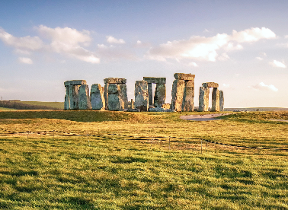Northern lights
Find out about how and why the northern lights form, and where to see them in the UK.
This incredible occurrence can be occasionally seen in the night sky over Britain.
The northern lights (also known as aurora borealis) appear as large areas of colour including pale green, pink, shades of red, yellow, blue and violet in the direction due north. During a weak aurora, the colours are very faint and spread out whereas an intense aurora features greater numbers of and brighter colours which can be seen higher in the sky with a distinct arc. The northern lights are best seen in darkness, away from any light pollution. The lights generally extend from 50 miles to as high as 400 miles above the Earth's surface.
What causes the northern lights?
The northern lights occur as a consequence of solar activity and result from collisions of charged particles in the solar wind colliding with molecules in the Earth's upper atmosphere.
Solar winds are charged particles that stream away from the Sun at speeds of around 1 million miles per hour. When the magnetic polarity of the solar wind is opposite to the Earth's magnetic field, the two magnetic fields combine allowing these energetic particles to flow into the Earth's magnetic north and south poles. Auroras usually occur in a band called the annulus (a ring about 1,865 miles across) centred on the magnetic pole. The arrival of a Coronal Mass Ejections (CME) from the Sun can cause the annulus to expand, bringing the aurora to lower latitudes. It is under these circumstances that the lights can be seen in the UK.
Depending on which gas molecules are hit and where they are in the atmosphere, different amounts of energy are released as different wavelengths of light. Oxygen gives off green light when it is hit 60 miles above the Earth, whilst at 100-200 miles rare, all-red auroras are produced. Nitrogen causes the sky to glow blue yet when higher in the atmosphere the glow has a purple hue.
Which weather conditions are best to view the northern lights?
The best conditions to view the lights are when the sky is dark and clear of any clouds. Cloud cover ultimately blocks the view of the light. Ideally, the lights will be best viewed away from any light pollution, in remote areas, facing the northern horizon - north facing coasts produce some of the best viewing locations. The northern lights are most active during the Equinox and Solstice in March/April and September/October.
Where can you see the northern lights in the UK?
Predominantly the northern lights are best witnessed in Scotland, North England, North Wales and Northern Ireland. However under severe space weather conditions, the lights can be seen throughout the UK.





